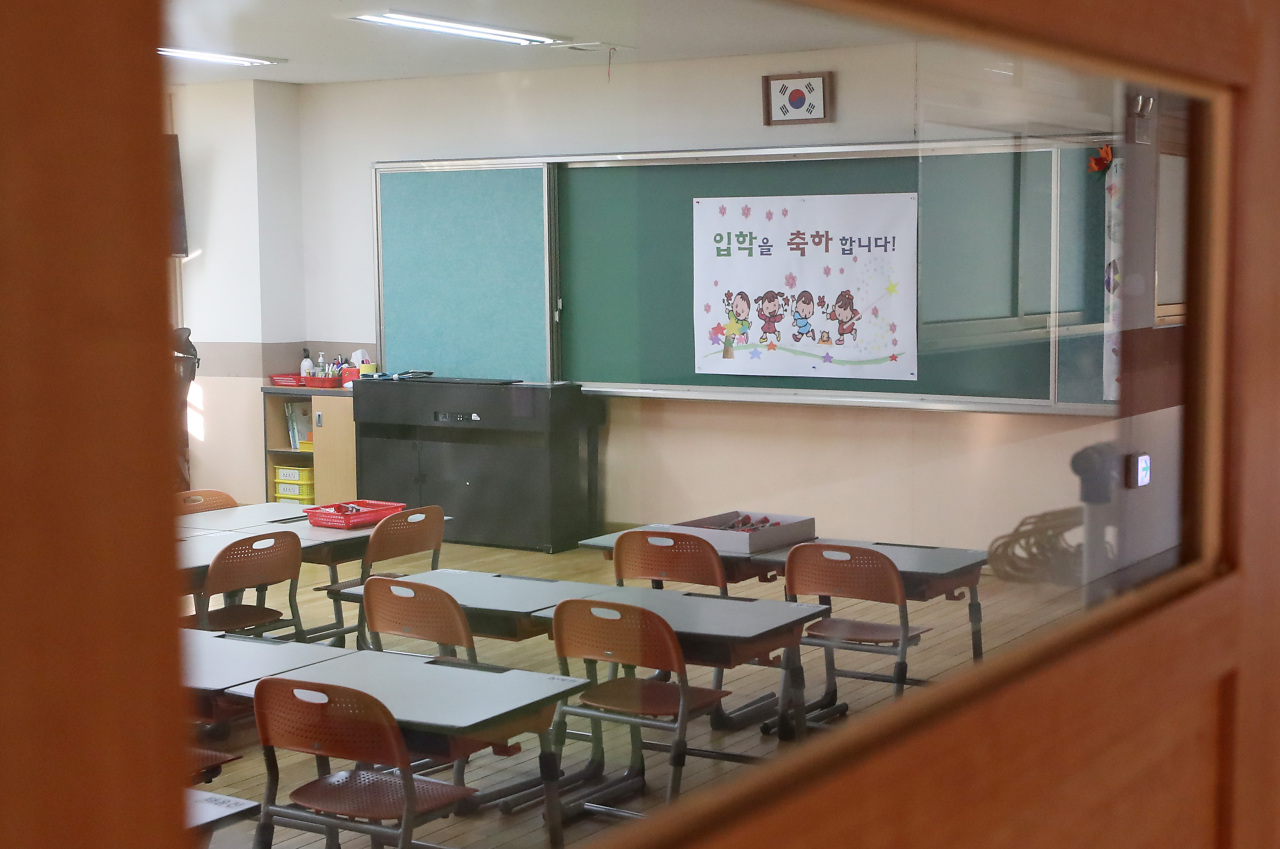When can children go to school?
Impending spring semester could pose uncharted challenges for virus containment
By Kim ArinPublished : March 14, 2020 - 13:06

The spring semester is set to start in 10 days after closing for three weeks, but is it safe for children to go to school?
The Ministry of Education says it plans on resuming K-12 classes March 23, a date that has already been postponed twice over the outbreak of coronavirus here.
“Pushing back the school calendar further is not something we are considering at the moment. But then again, nothing is set in stone because the outbreak is so rapidly developing,” a ministry official told The Korea Herald.
Among some 7,755 virus patients, at least 299 are students and 90 faculty members, the Education Ministry said, citing Wednesday’s data.
During a parliamentary meeting for virus response on Thursday, minor opposition lawmaker Rep. Kim Kwang-soo said classes needed to be put off once more, arguing opening as scheduled could “pose challenges” given the escalating health crisis. Rep. Ki Dong-min of ruling Democratic Party, on the other hand, said halting classes indefinitely was “not the answer,” as the outbreak is forecast to linger longer.
Calls for delaying the start of school are growing amid a worsening outbreak. A petition on Cheong Wa Dae website demanding the school year to be postponed has garnered over 80,000 signatures since being posted Monday.
Known cases of children have not been as severe, so far.
Clinical guidance issued by US Centers for Disease Control says of confirmed COVID-19 cases in China, 2.1 percent were aged under 19. No one under 9 has died from the disease. Children with COVID-19 also tend to show milder symptoms than adults, the guidance says, based on limited published reports.
Korea’s rate is similar with about 2.6 percent of all COVID-19 patients 17 or under.
Choi Eun-hwa, a pediatric infectious disease specialist at Seoul National University Hospital, said lower rates in children might have to do with the fact that they simply did not have much chance for exposure.
“One characteristic of the new coronavirus occurrence is that it is more common in people who travel frequently,” she said. “Children’s lack of severe symptoms may also be masking their infection.”
But this doesn’t mean children are less capable of passing on the disease.
“In adults, high levels of viruses are emitted in early stages when symptoms are benign. It is risky to assume children are any less infectious because they don’t develop aggressive symptoms,” she said.
Choi said although children themselves may not get critically ill, they could act as a driver of the spread of coronavirus in communities, especially as hygiene precautions are not easily followed by children.
Teachers say classroom contagion would be only a matter of time once classes start.
Shin Hae-young, a high school teacher for nine years, said classrooms have always been vulnerable to contagious illnesses.
“Every teacher knows how easily common cold and other seasonal infectious diseases can circulate in a classroom,” she said.
“Completing the mandatory 190 school days is very important, especially for a high school curriculum which needs to prep kids for college,” she said. “But extraordinary times call for extraordinary measures and I think this might be a time when health and safety should trump academic concerns.”
A preschool teacher in Ilsan, Gyeonggi Province, said opening classes with the way things are now could be “a disaster waiting to happen.”
“We are definitely short of protective masks, for both students and teachers, and even if we did have enough, children will have difficulty keeping them on,” she said. “The student-to-teacher ratio at our school is about 25 or 27 to 1. It will be impossible to stop children from taking their masks off, sharing food, and engaging in other potentially unsafe behavior.”
Pediatric psychiatrist Kim Hyo-won of Asan Medical Center said parents should step up in educating the children of the precautions -- such as hand washing, face mask wearing and avoiding frequently touched surfaces -- not just by telling them, but by showing them through example.
“Parents have to help children understand what will help them keep safe from the virus through open conversations, and why it might not be safe to do certain things that are normally OK.”
Kim said the disruption in routine caused by the virus outbreak could induce anxiety in children, and that the times warranted increased attention from parents.
“The beginning of a new school year is tough because it takes time for children and adolescents to build rapport with their teachers, which adds to the anxiety they might have from the ongoing outbreak,” she said. “Listen to their questions, reassure them but also inform them, and validate their concerns.”
By Kim Arin (arin@heraldcorp.com)



![[Exclusive] Korean military set to ban iPhones over 'security' concerns](http://res.heraldm.com/phpwas/restmb_idxmake.php?idx=644&simg=/content/image/2024/04/23/20240423050599_0.jpg&u=20240423183955)

![[Graphic News] 77% of young Koreans still financially dependent](http://res.heraldm.com/phpwas/restmb_idxmake.php?idx=644&simg=/content/image/2024/04/22/20240422050762_0.gif&u=)



![[Pressure points] Leggings in public: Fashion statement or social faux pas?](http://res.heraldm.com/phpwas/restmb_idxmake.php?idx=644&simg=/content/image/2024/04/23/20240423050669_0.jpg&u=)










